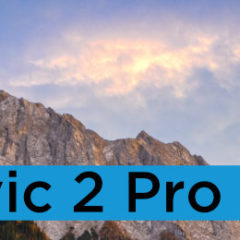Best Mavic 2 Pro ND Filters – Which ones to buy?
You are on the search for the best Mavic 2 Pro ND Filters. We get it, you as a Mavic 2 Pro owner aren’t sure which of the many brands of ND filters you should consider. Don’t worry, we will go over some of the options, and dive into some analysis of the best Mavic 2 Pro ND Filters. Let’s get started! ND Filters Mavic 2 Pro Video Why do You need ND filters on a variable aperture drone such as the Mavic 2 Pro? Which ND filters should you consider out of so many brands? It turns out you don’t have to spend an arm and a leg. These questions and more are answered in our video: ND Filters Mavic 2 Pro - WHY you NEED them & Comprehensive Review! [4K] Watch this video on YouTube. What are ND/Neutral Density Filters? ND or Neutral Density Filters, limit the amount of light coming into the lens and therefore hitting the sensor. You can think of them as sort of sunglasses for your drone. They are essential for recording video, but also useful for photography. Certain ND filters also contain circular polarizers, we will cover what those are as well. ND Filters are important for Photos and Videos We learned that we should aim to shoot photos and videos at F4. In bright conditions, without an ND Filter, this would cause a very high shutter speed. For photos, any type of motion blur for panning shots, for example, would be impossible. For video, it is even more critical to lower the shutter speed. The 180-degree shutter rule Essentially your shutter speed for filming should be double of the frame rate you’re shooting at. So if you are shooting in 30fps (frames-per-second) your shutter speed should be 1/60th. If shooting in 24fps (the cinematic look) you would select 1/50th as 1/48th isn’t an available shutter speed. The name of the 180-degree shutter rule comes from when we used to shoot on film with rotary shutters. The shutter is rotating and it’s blocking 180 degrees of a full circle. So each time the shutter passes the frame, the frame gets exposed to a specific amount of time. In filmmaking standards that would be double the frame rate and if they wanted to use a different shutter speed they would just swap out the shutter. Most Hollywood blockbusters are filmed using the 180-degree shutter rule at 24fps, it gets you the most natural, cinematic look. Are ND Filters required on a Mavic 2 Pro? The DJI Mavic 2 Pro is the first Mavic-Class drone to feature variable aperture blades....




